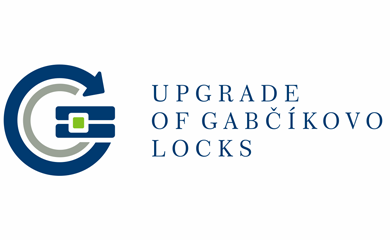Gabčíkovo, 23rd November 2021
The Gabčíkovo Waterworks lock chambers have been in continuous operation since 1992, with the exception of routine maintenance and emergency repairs. The locks have been filled and drained more than 100 thousand times. More than 400 thousand ships have passed through the locks since they were put into operation. Now thanks to the European project, the right lock chamber has undergone modernization and is once again in service for international water transport. The renewed right lock was officially brought into use by the Minister of the Environment Mr. Ján Budaj, together with the State Secretary of the Ministry of Transport and Construction Ms. Katarína Bruncková and the General Director of the VODOHOSPODÁRSKA VÝSTAVBA, STATE ENTERPRISE, Mr. Vladimír Kollár.
According to the Minister of the Environment Ján Budaj, water transport is one of the more environmentally friendly and safer ways of transporting people and goods. „Constructors and water managers had to deal with various pitfalls during the modernization. It is important that the work on the right lock, which is part of a unique European project, was performed with maximum professionalism,” emphasized the Minister of the Environment of the Slovak Republic, Mr. Ján Budaj.
The beneficiary of the subsidy for the project is the Ministry of Transport and Construction of the Slovak Republic. State Secretary Katarína Bruncková highlighted the benefits of the project: „I am extremely pleased that the Ministry of Transport of the Slovak Republic together with the state enterprise – Vodohospodárska výstavba – have received a grant for the project Upgrade of Gabčíkovo locks from the European Union funds, specifically from the Connecting Europe Facility. The total value of the project is 145 million euros, of which almost 123 million euros (85%) is from EU funds and the amount of 22 million euros (15%) was contributed by the Slovak Republic by national co-financing of this project. I am convinced that, thanks to this implemented project, sailing on this international waterway will be safer, smoother and more intensive.”
The construction works on the modernization of the Gabčíkovo Waterworks (VDG) lock chambers were delayed for several months due to the COVID-19 disease pandemic. The installation of new steel structures in the right lock began in June 2020. The lower gate in the lock of the weighing of more than 1000 tons opens as double-wing doors. The constructors welded them from the prepared parts using cranes directly at the bottom of the lock. Not only the gates and their mechanics, but also the walls themselves, including grouting and stabilization of the subsoil, were gradually innovated and modernized. Both the locks and the hydroelectric power plant stand on a gravel-sandy subsoil, so it was important that the filling and emptying system, through which 300 thousand cubic meters of water pass, be well secured.
Before commissioning the upgraded right lock into sharp operation, the water managers carried out individual tests, functional tests and also comprehensive tests, which were officially completed in October. „The tests verified the functionality and reliability of the individual technological equipment of the right lock chamber, with an accent on the safety of navigation and the operation itself. Thanks to the upgrade of the whole control system, we expect that navigation through the Gabčíkovo level will be faster and smoother,” added General Director of Vodohospodárska výstavba, s. e., Mr. Vladimír Kollár.
Besides the pandemics, the works were delay due to unforeseeable circumstances found during works on the upper head, where it was impossible to proceed according to the originally agreed procedure in preparation for the installation of the upper gates. This required a complete change in the technical design of the upper gate armatures. The water managers have already started the modernization works in the left lock chamber of the Gabčíkovo Waterworks. The works are planned to take approximately 14 months.
The only responsible for the information used in this article is the author. The European Union has no responsibility for any use that may be made of the information contained therein.


